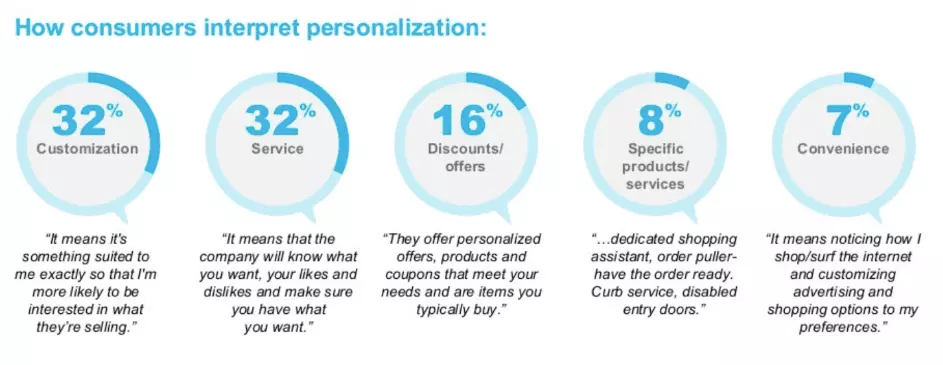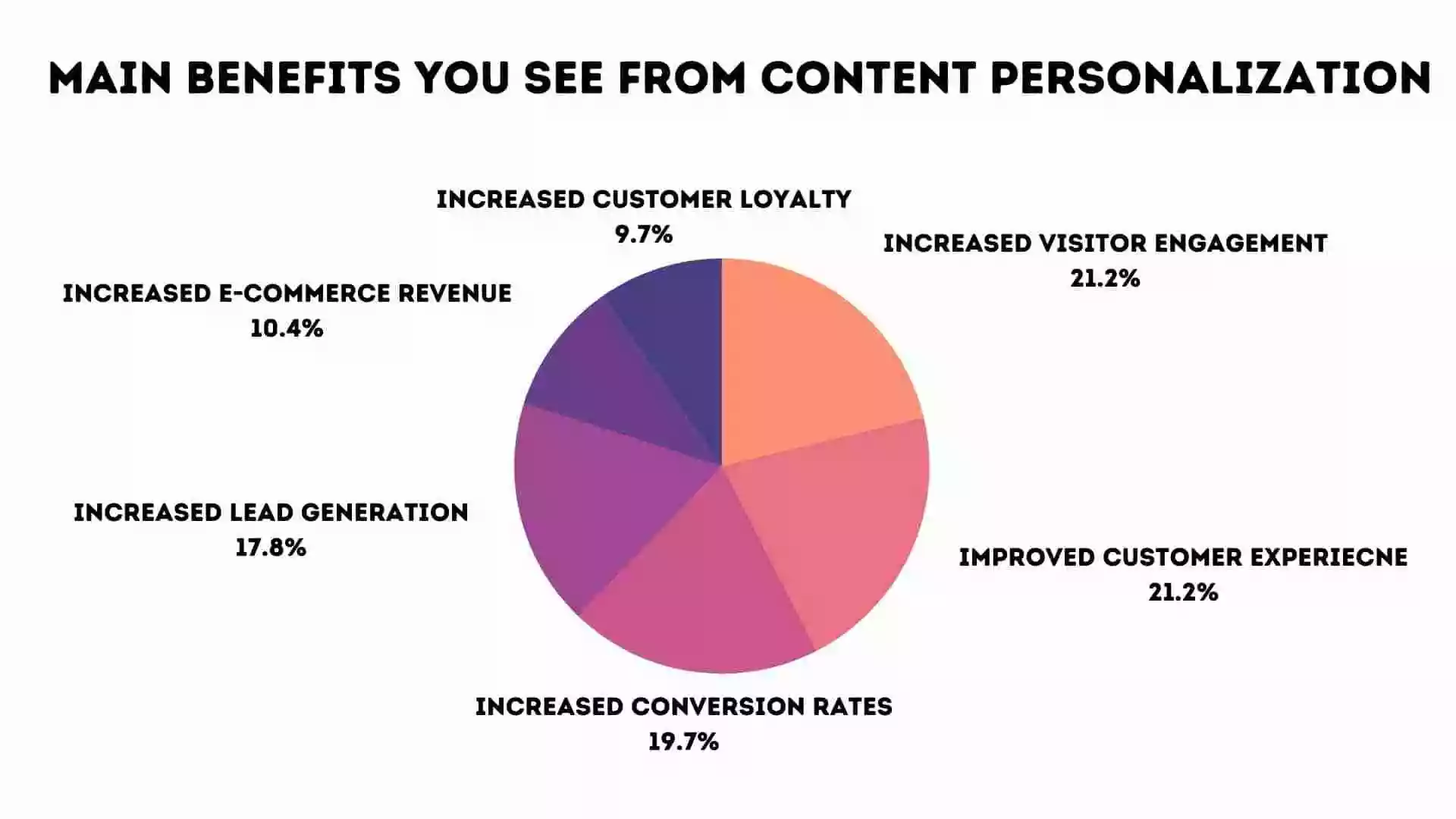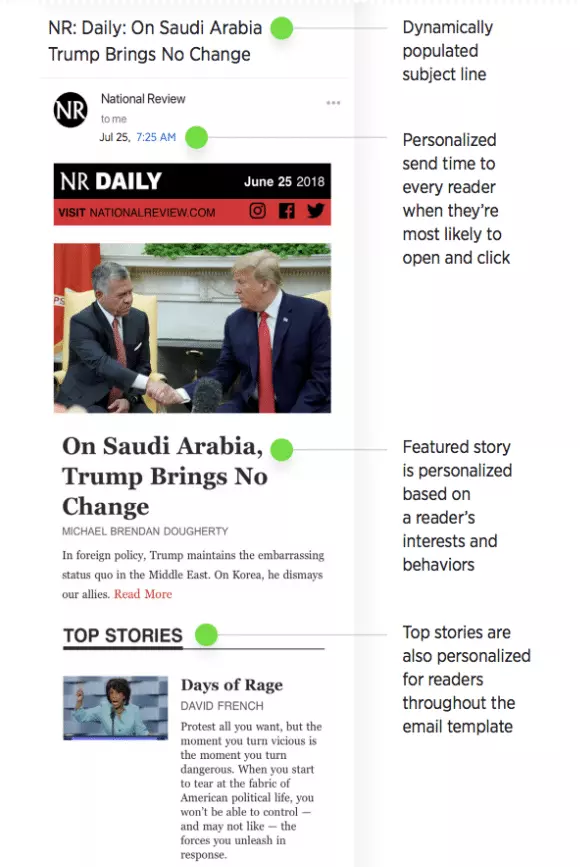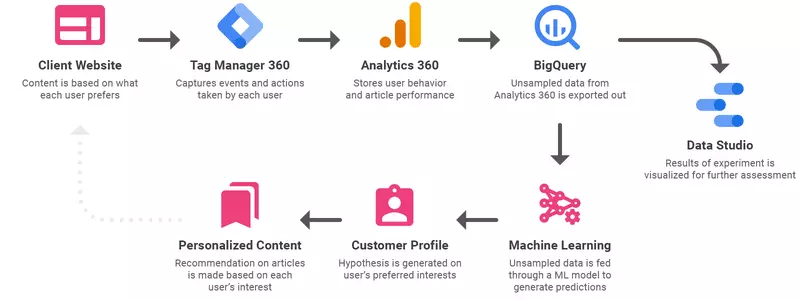Fashion, food, beliefs, or goals, let it be anything, are more enjoyable and satisfactory if they align well with our interests.
This digital era that we are in has elevated our expectations for customized or personalized experiences to an uncommon height. Most of us usually find it frustrating if we don’t find the kind of content or product we are looking for.
And, we only stay true to a brand if they provide us with content that best lines with our interest, something that has a personalized touch.
For any business selling products being highly-personalized is the key to please and retain its users. The same is true for every publisher for the content they serve needs to be customized in a way that piques every reader’s interest.
But content personalization is more than just that, let’s dive into more information to understand what more it entails.
Table of Contents
- What is Content Personalization?
- Types of Personalization
- Benefits of Content Personalization
- On What basis, Publishers can Personalize the Content?
- Examples of Publishers Benefited from Content Personalization
- How Can You Build a Content Personalization Strategy?
- Tools to Help You in Content Personalization
- What challenges do publishers face when personalizing content?
- What’s Next?
What is Content Personalization?
Content personalization is basically an approach wherein the publisher can tailor the website’s content, messages, emails, and offers they serve to the audience, making it more closely related to their interests, needs, and behavior.
With content personalization, every visitor of yours can have a better user experience because they will be able to see content that is relevant to them. When people easily find what they want on your website, your revenue and site performance will definitely improve over time.

Every consumer has a very contrasting definition of what they need from you with respect to personalized content. And, you need to know how you can address their needs by serving them content, services, products, etc, that goes well with what they want from you.
“Ultimately, all of this work on personalizing content is all about surfacing content and experiences that our readers and advertisers will value”
– Julia Beizer, Chief Product Officer, Bloomberg Digital (src)
Types of Personalization
It’s obvious that the kind of content the readers expect to see differ from person to person. 86% of publishers today personalize their content passively rather than actively to be able to serve unique content to their audience.

Passive personalization is an approach where the content seen by readers is tailored on the basis of readers’ location or browsing history whereas active personalization is an approach where readers themselves select what kind of content they want to see.
Benefits of Content Personalization
The purpose of content personalization is to help visitors find the desired content more quickly and give you a better shot at understanding your audiences and converting them into loyal ones.
Personalizing your content will lift your revenue by 5-15%, reduce acquisition costs by 50%, and enhance the efficiency of your marketing spending by 10-30%.
Few other important benefits that you can achieve through content personalization are:
Increased visitor engagement: The likelihood that the audience will engage with your content, and the amount of time they remain on your site increases when you deliver personalized content.
Improved reader loyalty: By ensuring that you are providing an individualized site experience, you can prove that you care about your audience, thereby, boosting your reader loyalty.

On What basis, Publishers can Personalize the Content?
Industry-wise Segmentation
This is the common type of customization wherein segmentation of your audience is done based on industry, the department, job title, geography, behavior, and more. Such data are often found under audience definition and is very useful for your business development.
Reader Journey
This kind of customization covers the different stages of the consumer’s journey on your website. Mapping their journey will help you to better align your content with each phase of their journey. In this way, you are delivering content in a highly contextualized manner, easily guiding them to the next step.
Buyer Personas
Such customization can only be justified when created through industry studies, navigation data, social platform analysis, reader surveys, demographics, and other records. With such vast information in hand, you can easily analyze individuals’ needs, dislikes, and values.
Also, with time as you collect more data, you will be able to refine each persona to further enhance your personalization efforts. But to scale the creation and optimization of data-driven personas, you should employ tools that will help you better collect and analyze your reader’s data in real-time.
Individual Personalization
Today, readers no longer accept one-size-fits-some content experiences. The only way to truly personalize the reader’s experience is by delivering truly individualized content, in a way that each reader’s experience is unique and customized as per their interests.
To achieve such individualization, you have to optimize content experiences in real-time based on the actions and preferences of that specific customer’s identity. Using machine learning and artificial intelligence (AI) based tools, you can instantly analyze and personalize all your available content to deliver the most optimal piece of content to each visitor.
Examples of Publishers Benefited from Content Personalization
- Content personalization paid off in a big way for Business Insider as they used behavioral data to develop profiles of its readers, based on their previous interaction with Business Insider’s website and email campaigns. They used the information in these profiles to personalize their email newsletters and onsite content recommendations to better engage readers. Through personalization, they were able to increase their clickthrough rates by 60% and also boosted their ad click rates in email newsletters by 150%.
- Conservative publisher National Review traditionally used to perform email marketing in a batch-and-blast manner. This resulted in a high volume but low engagement audience for them that gradually kept shrinking. The publisher then worked towards evolving its email program to make it more personalized. By personalizing their subject lines, send times, and content in newsletters based on their readers’ interest, they successfully increased their clickthrough rates by 142% Y-O-Y. Plus, they were also able to increase their page views per thousand emails sent by 387%.

- Even The New York Times, which has more content than any one person could conceivably read, personalized their content by using their reader’s past behavior to make the most relevant recommendations. Along with that, The New York Times’ website also includes a ‘Recommendations Page’ link that contains even more content.

- With so much content being created and produced across all its news and mobile sites, leading media Organization Astro wanted to make its digital content even more relevant and engaging to audiences on its sites and apps. Therefore, the media publisher employed an automated content tagging system that helped them create custom audience profiles based on their interests. This resulted in a 258% increase in article click-through rate (CTR). Seeing such a boost, the company expanded this personalized content strategy across its entire organization.

How Can You Build a Content Personalization Strategy?
Content personalization is no more just a clever strategy for publishers, it has slowly become the norm. Today, offering tailored and engaging content requires a far more strategic and data-driven approach: audience segments, behavioral data, and channel performance must all be a part of the process.
To start with, there are three steps that are essential to building a successful content personalization strategy:
- Capture reader data — In this step, you will be defining what reader information is needed and how will it be collected through various channels, including industry studies, satisfaction surveys, on-site events, page navigation, third-party data sources, etc. Each piece of information collected can be used to personalize your visitors’ experience.
- Analysis of data — After collecting the data, it’s essential that you develop ways that will help you organize and make it useful for content personalization. Analyzing data to understand the behavior of audiences often requires specialized tools and platforms like Google Analytics, CRM (Customer Relationship Management), and the likes.
- Act on your insights — This involves building content, offers, and even products that are much better suited to your audience.
If you’re seeking to adopt personalization at an individual level, building your audience’s profiles and segmenting them will be the backbone for your content personalization strategy. Giving it an extra competitive edge will be a wide range of audience data collected because when you narrow it down, content personalization is all about using your visitor’s behavior data more effectively.
Seeing that several personalization levels are there in the industry, segmenting your audience when producing content combined with advanced platforms will help you curate unique personal content experiences for each user.
Knowing how to segment your audience is absolutely important to deliver a unique reading or browsing experience, still, it’s not enough to achieve that 100% unique personalization you want to provide.
And, that’s where technology promises to help you better deliver complete personalized content. Automation and machine learning tools will let you test everything from headlines to placement on a homepage. Such targeted content boosting on your websites will ensure that your personalized content is reaching the correct audience.
So for you to achieve the same kind of results, tools like data management platform (DMP), Customer Data Platforms, Google Tag Manager, and the likes, could be the best options.
Tools to Help You in Content Personalization
-
Data Management Platform
With more user data being created and collected on a daily basis, you need to go beyond the standard suite of analytics tools and select better ways to use and manage your audience data.
Implement a DMP to optimize your content so that you can efficiently target your potential readers.

The platform collects unstructured data about your audience from various sources such as websites, apps, social media, and more. This data covers the information on demographics, behavior, interests, and preferences of your site visitors.
Once the data is collected, it is organized into a series of segments that can be changed as per the audience’s content preferences. Once categorized, this data can be used to better understand your audience. The platform provides the best recommendations and insights based on the data it collects. It will also give you insights into how your content has performed among your audience in the past.
In other words, all the data is collected at one single place so that you can easily and quickly understand who your best audience are, what content they interact with more, and how you can reach them more effectively.
-
Customer Data Platforms (CDPs)
CDPs have emerged to be the most favored technology when it comes to performing content personalization at scale. It’s a process that automatically unifies all the data from multiple source systems into a single record. The platform adds scripts to the websites to track the reader’s behavior and use the data to personalize user experiences. It does not only aggregate the data for personalization but also puts relevant data out to other analytic systems for analysis.
Even the most basic CDP can be used to unify data from your CRM, website, email marketing platforms, etc. Best-in-breed CDPs are the ones that use machine learning and AI to personalize effectively.
So, if you are thinking about personalization then CDPs integrated with ML and AI are the best options.

-
GTM (Google Tag Manager)
When using Personalization, you can use Google Tag Manager to instrument events, which can both provide more understanding and a better-customized experience for your users.
Google Tag Manager has a Data Layer variable that helps you to trigger personalizations. This Data Layer makes information more accessible to the GTM. Another platform ‘Google Optimize’ reads these pieces of information from GTM and then shows different content based on them. The scope of content personalization is large with GTM as you can feed almost any information into the data layer.
With the combination of GTM and Google optimize, you can improve the experience that visitors have on your site and thereby, increase conversion rates and also repeat visits.
-
Dedicated Content Personalization Platforms
As we all know, personalization is crucial to boost readers’ engagement and revenue, but it can be a tricky process—especially with GDPR making it difficult to gather information.
Hence, dedicated tools for content personalization, including Evergage, Optimizely, OmniConvert, Adobe Target, Dynamic yield, and others, make it simpler for you to collect data the right way through proper channels while ensuring the customers that their data is properly utilized.
Precisely, with audience segmentation and such technology combined, publishers like you can effectively deliver the right content and reach more audiences. A successful personalization strategy can lead your business to greater heights and increase value and trust in the eyes of the customer.
What challenges do publishers face when personalizing content?
There are challenges that are holding publishers (like you) back from successfully executing personalization. Around 68% of the publishers find it difficult to execute personalization because of the lack of technical expertise required while over 58% find it because of short monetary funding. Fewer publishers chose not to tailor their content for readers because of challenges related to ethical qualms, privacy, and compliance.
So, how can you overcome these challenges?
In the privacy-concern world, by taking consent from your audience beforehand, you can understand their likes and dislikes, and then execute any type of personalization to better connect with them. Getting this consent from your audience can be done using the Consent Management Platform (CMP).
What’s Next?
Approaching your websites’ content in a way that it’s personalized for your readers will be beneficial for you. Publishers who invest in personalization are able to outsell less sophisticated competitors by 20%. Content personalization is like the light at the end of the tunnel for publishers looking to reach more audiences. And, that’s why there has been an increase in demand for personalization. Many publishers who have still not started to personalize their content said they are keen on developing plans to do so in near future. And, you should too.























